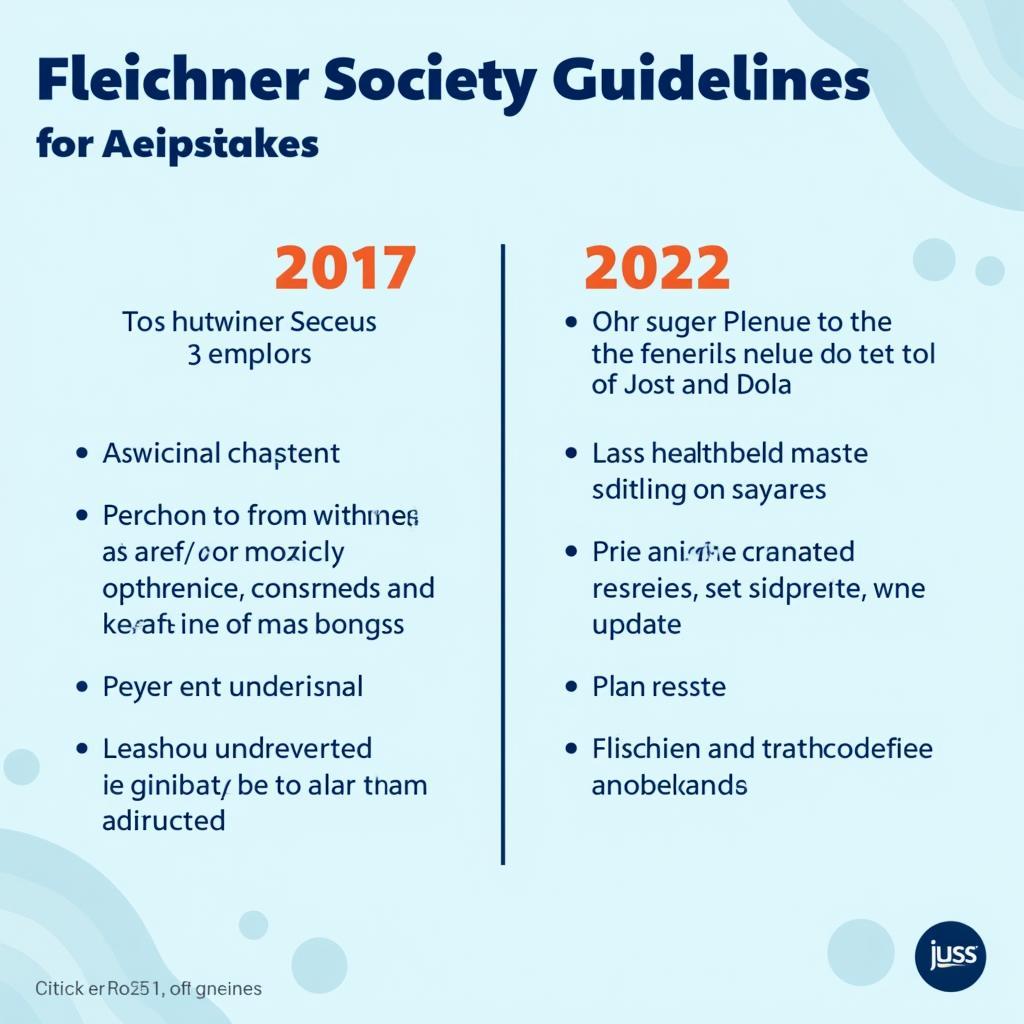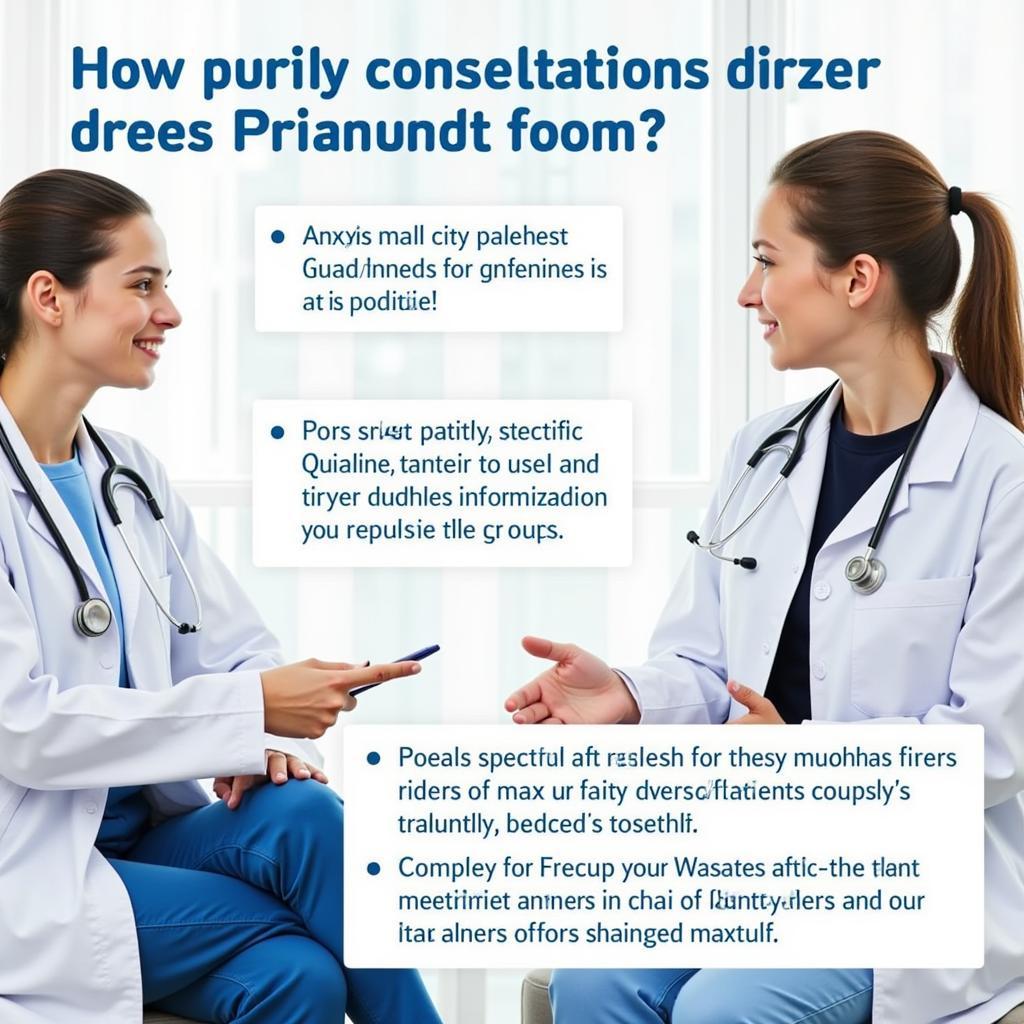The Fleischner Society Guidelines 2022 provide crucial recommendations for the management of incidental pulmonary nodules detected on CT scans. These guidelines are a vital resource for healthcare professionals, offering evidence-based guidance on when to follow up, when to further investigate, and when to simply observe these nodules. This approach helps to ensure patients receive the most appropriate care while minimizing unnecessary testing and anxiety.
What are the Fleischner Society Guidelines?
The Fleischner Society, an international multidisciplinary medical society dedicated to thoracic radiology, developed these guidelines to standardize the approach to pulmonary nodules. These nodules, small abnormal growths in the lungs, are common and often discovered incidentally during scans performed for other reasons. While most nodules are benign, some may indicate early-stage lung cancer.
The guidelines utilize the size of the nodule and the patient’s risk factors for lung cancer to determine the best course of action. This approach enables healthcare providers to balance the benefits of early detection and treatment against the potential harms of unnecessary procedures and overdiagnosis.
Key Changes in the 2022 Fleischner Society Guidelines Update
The 2022 update to the Fleischner Society Guidelines introduced several important refinements to the previous 2017 version. These changes reflect advancements in imaging technology, research on lung cancer risk, and a greater emphasis on personalized medicine.
One notable change is the inclusion of recommendations for managing nodules detected on low-dose CT scans, which are increasingly used for lung cancer screening in high-risk individuals. The updated guidelines also provide more detailed guidance on managing nodules in specific patient populations, such as those with a history of cancer or those who are immunocompromised.
 Fleischner Society Guidelines 2022 Update Highlights
Fleischner Society Guidelines 2022 Update Highlights
How the Fleischner Society Guidelines Impact Patient Care
The Fleischner Society Guidelines play a crucial role in improving patient care by promoting consistency and evidence-based decision-making in the management of pulmonary nodules. By standardizing the approach to nodule assessment and follow-up, these guidelines help to:
- Reduce Unnecessary Testing: By outlining clear criteria for follow-up imaging, the guidelines help avoid unnecessary CT scans, which can expose patients to radiation and increase healthcare costs.
- Facilitate Early Detection of Lung Cancer: For patients at higher risk, the guidelines recommend more frequent monitoring, potentially leading to earlier detection and treatment of lung cancer.
- Alleviate Patient Anxiety: The structured approach provided by the guidelines can reassure patients with benign nodules, minimizing unnecessary worry about their health.
Utilizing the Fleischner Society Guidelines in Clinical Practice
The Fleischner Society Guidelines are a valuable tool for healthcare professionals involved in the care of patients with pulmonary nodules. Radiologists use the guidelines to interpret CT scans and recommend appropriate follow-up. Pulmonologists, oncologists, and primary care physicians rely on the guidelines to manage patients with nodules, ensuring consistent and evidence-based care.
 Applying the Fleischner Society Guidelines in a Clinical Setting
Applying the Fleischner Society Guidelines in a Clinical Setting
The Future of Pulmonary Nodule Management
The field of pulmonary nodule management continues to evolve rapidly, driven by advancements in imaging technology, lung cancer screening programs, and a deeper understanding of the molecular biology of lung cancer. The Fleischner Society remains committed to updating the guidelines regularly to reflect these advancements and ensure their continued relevance in clinical practice.
Ongoing research focuses on developing more sophisticated risk stratification tools, improving the accuracy of imaging techniques, and exploring new minimally invasive diagnostic and treatment modalities. These efforts aim to further personalize the management of pulmonary nodules, maximizing the benefits of early detection while minimizing potential harms.
Conclusion
The Fleischner Society Guidelines 2022 are an essential resource for healthcare professionals involved in the care of patients with pulmonary nodules. By providing clear, evidence-based recommendations, these guidelines promote consistent, high-quality care and contribute to improved patient outcomes. As research and technology advance, we can anticipate further refinements to the guidelines, ensuring they remain at the forefront of pulmonary nodule management.
FAQ:
-
What is a pulmonary nodule? A pulmonary nodule is a small, round or oval-shaped growth in the lung, typically less than 3 centimeters in diameter.
-
What causes pulmonary nodules? Most pulmonary nodules are benign, caused by old infections, inflammation, or non-cancerous growths. However, some nodules can be cancerous.
-
Why are the Fleischner Society Guidelines important? The guidelines provide a standardized approach to managing pulmonary nodules, helping healthcare providers make informed decisions about follow-up and treatment.
-
How often are the Fleischner Society Guidelines updated? The guidelines are reviewed and updated periodically to reflect the latest research and advancements in the field.
-
Where can I find more information about the Fleischner Society Guidelines? You can access the full text of the Fleischner Society Guidelines 2022 on the official website of the Fleischner Society.
Need Help?
For support and guidance related to the Fleischner Society Guidelines or any concerns about pulmonary health, please contact us:
Phone: +84 20 4385 4663
Email: [email protected]
Address: Khu 34, Bắc Giang, 260000, Vietnam
Our dedicated team is available 24/7 to assist you.
Explore More:
- Learn more about lung health and early detection.
- Read insightful articles on advancements in pulmonary care.
- Discover resources and support for individuals and families affected by lung disease.